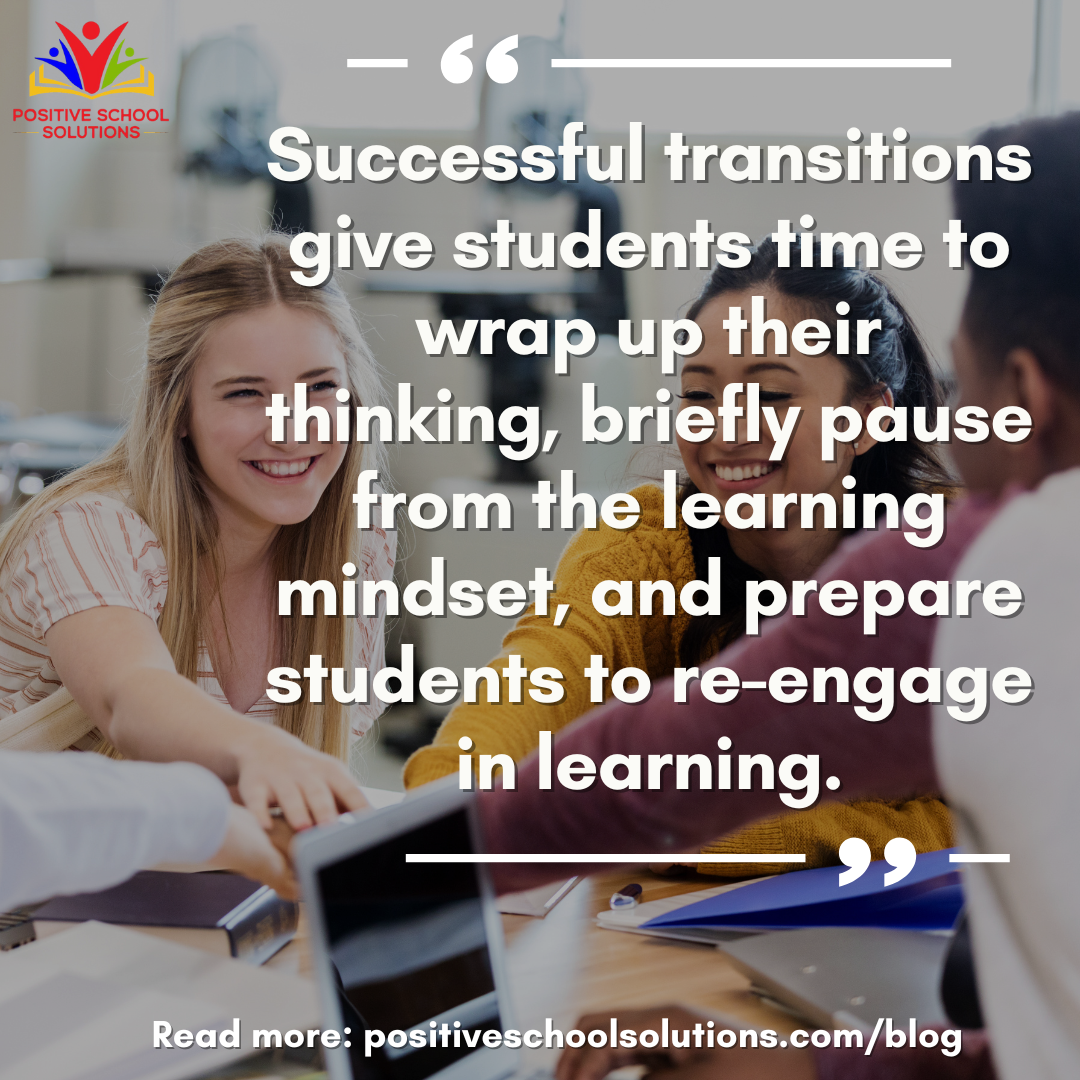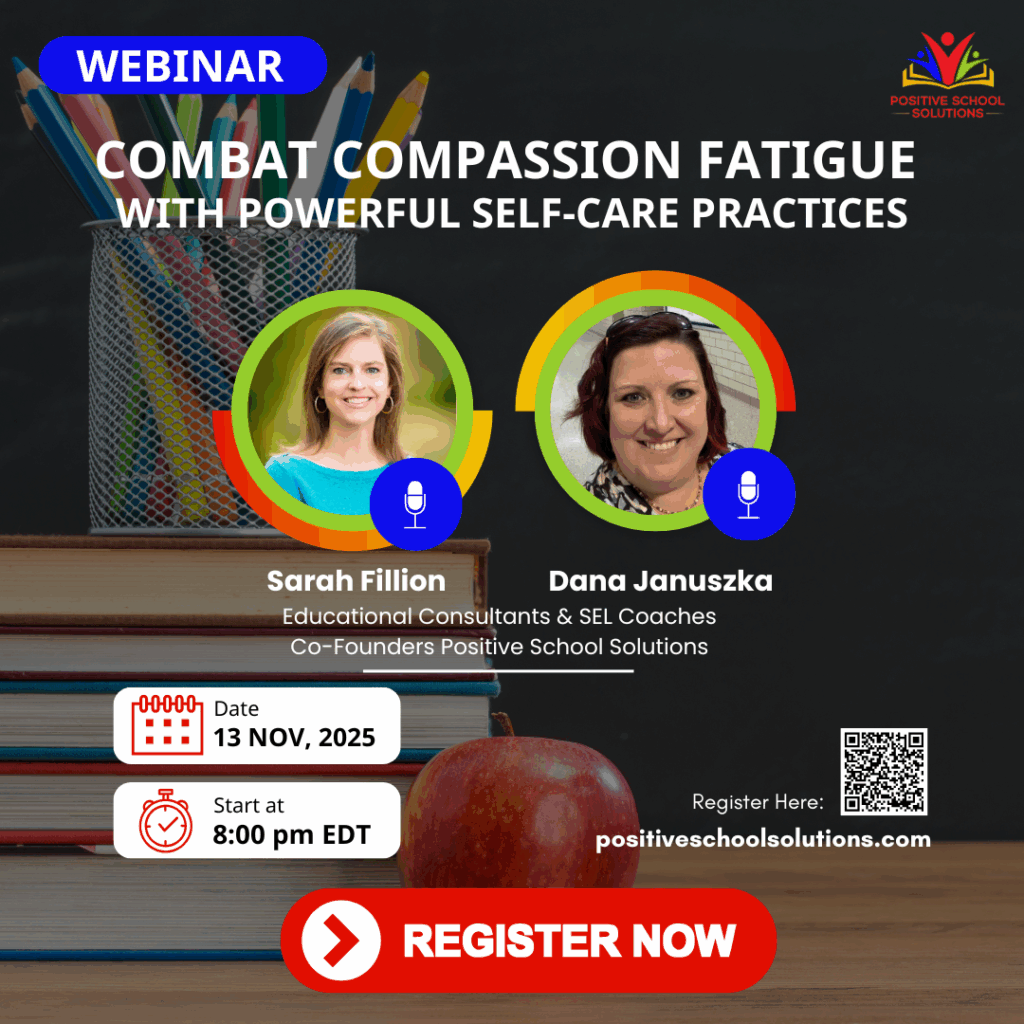 When I first started teaching, I thought the only good transitions were fast transitions. I worked with industrious third graders and capitalized on their enjoyment of competition by carrying a stopwatch around my neck and posting their transition time on the board. We celebrated every time that they beat their previous best record. This system worked really well… for about three weeks. Then the students realized that the quicker they transitioned physically, the less time they had to transition mentally from one activity to the next.
When I first started teaching, I thought the only good transitions were fast transitions. I worked with industrious third graders and capitalized on their enjoyment of competition by carrying a stopwatch around my neck and posting their transition time on the board. We celebrated every time that they beat their previous best record. This system worked really well… for about three weeks. Then the students realized that the quicker they transitioned physically, the less time they had to transition mentally from one activity to the next.
We got into a vicious cycle where I got frustrated because the students were taking longer, which led me to harp on the students to move faster, which put the students in the wrong headspace for learning, resulting in the next learning block failing spectacularly. When I stopped to reflect, thinking about how the transition times got longer and the enthusiasm for faster times diminished daily, I realized my thinking was more compliance-based, rather than motivated-based. What I mean by that is I wanted students to be little machines, being as efficient as possible, to maximize our output. When I adapted my thinking to appreciate the need for humans (especially young ones) to have a physical and mental break to switch from one task to another, I was able to identify the results I wanted – focused and engaged learners for every learning block!
After a year of trying different techniques to reach these goals, I came upon the key ingredients to a successful transition. A successful transition, by my definition, is one that allows students closure on the activity they were working on and excites them for the learning activity ahead.
Here are the five components that create successful transitions:
- Provide students with a visual and audible timer. Giving students time-checks throughout the working period helps build the skill of time management. Some students become engrossed in their work and need a verbal interruption to break through their focus, while others will tune into a visual cue if it is used. Using both visual and audible check-ins supports all students and supports them in planning an ending point for the time they have remaining.
- Ask a reflective question. Taking time to have students reflect on the learning activity they just completed allows them a chance to synthesize their understanding of the topic covered. Questions can be asked in a variety of ways: self-reflection, sharing with a partner, small group conversation, indicating silently with motion (thumb up, stand up, or moving to a portion of the room), or a whole class discussion.
- Post clear and detailed directions. Help your students know the expectations, and offer grace to students that need a little more time in cleaning up and preparing for the next learning activity, by writing out the directions for the transition. Include what needs to be put away, where students need to move to, any supplies or resources they need to prepare, expected volume, and a general time frame. Giving students the information and a numbered list as a visual encourages students to work through the process and stay on track.
- Bring students together to do a brain break. Before moving into the next learning activity, have students participate in a brief brain break. By having students move and interact with one another in a structured format, their brains receive oxygen, water and glucose, which are all critical factors in improving students’ mood, memory and motivation.
- Launch the new topic with an opening activity or question. Once students have had a chance to reset from the previous learning activity we can launch them into the next one! By asking a question, playing a short game, having students participate in a conversation, or showing them something exciting about the next learning segment, we build their enthusiasm and excitement to begin. We prepare the students’ mindsets, which is likely to result in deeper engagement and higher participation.
Successful transitions give students time to wrap up their thinking, briefly pause from the learning mindset, and prepare students to re-engage in learning. By observing our students, we can quickly identify the effectiveness of our transitions. Through incorporating fun and adjusting to the group of students we’re working with, we can keep the momentum of learning throughout the school day! The critical piece is adjusting our expectations to understand that successful transitions set students up for success for the next learning segment.
Written by Sarah Fillion and Dana Januszka for Positive School Solutions 2023

